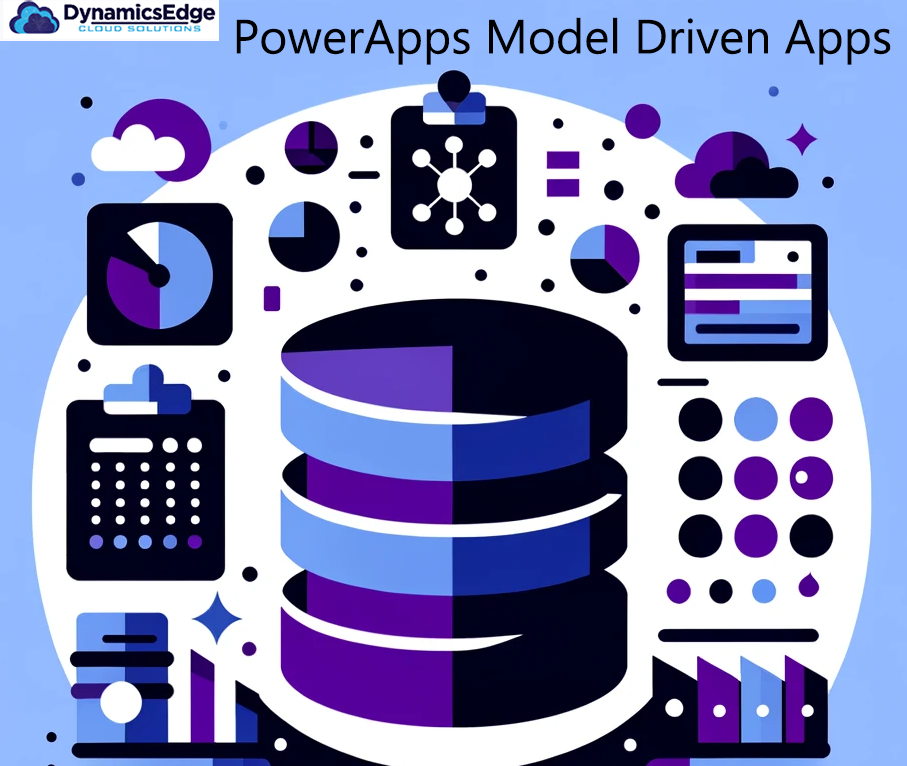Revolutionizing the way we approach business problems, Power Apps has really emerged as a game-changer in the realm of application development. In our world where efficiency and agility are paramount, these power packed tools can truly empower even those with minimal coding expertise to craft bespoke solutions tailored to their unique operational needs.

Power Apps, a dynamic suite within Microsoft’s Power Platform, is a shining beacon of innovation in the enterprise as well as business technology landscape. Power Apps model driven app training encapsulates a range of apps, services, and connectors. These are facilitating the creation of customized applications that align seamlessly with business processes and data models. At its core, Power Apps is seamlessly designed to democratize the app development process – which is making it accessible to a broader range of professionals, not just seasoned developers.
At the heart of PowerApps model driven app training are two types of applications: model-driven and canvas apps. Model-driven apps, structured and data-centric, are the epitome of efficiency in complex scenarios. They automatically generate user interfaces based on the underlying data model, ensuring a coherent and process-driven user experience. This powerapps model driven app developer training concept contrasts really quite sharply with canvas apps, where freedom and creativity can reign supreme. Developers with model-driven app vs canvas app could design from a ‘blank canvas’, placing controls anywhere, forging unique user interfaces and experiences.
The role of a Power Apps developer tends to transcend traditional development. It’s a blend of creativity, data understanding, and process optimization. For model-driven app developers, the power apps model driven app vs canvas app focus intensifies on the data model and business logic. This can demand a real keen understanding of how to translate complex requirements into functional application components.
Three areas are quite paramount in creating effective model-driven apps: astute data modeling, seamless business process integration, and crafting an intuitive user experience. Data modeling is the architecture upon which these apps stand. This may be requiring a quite thorough understanding of entities, fields, and their interrelationships. Business process integration ensures that the app doesn’t just represent data but actively guides users through business workflows. And in the world of model-driven apps, user experience is king, which can be dictating the app’s usability and adoption.
In the Power Apps ecosystem, data sources and connectors are the lifelines that fuel applications. With over 1400 connectors – including heavyweights like SharePoint, Dataverse, Salesforce, Oracle, and SQL Server – the possibilities can be endless. These connectors play different roles in canvas and model-driven apps, catering to flexible, creative designs in the former and structured, process-driven functionality in the latter.
Relationships, tables, columns, and fields in model-driven apps are like the bespoke powerapps training gears in a well-oiled machine. They work together in power apps model driven app one to many relationships unison to represent and manage data effectively, helping to ensure that the app not only displays data but also reflects the complex relationships and processes inherent in business operations.
Let’s see if we can bring these concepts to life with some practical examples. Imagine a US retail electronics manufacturer using a canvas app to streamline its supply chain. This app, tied to their SQL Server, provides real-time insights into inventory levels. It may end up driving efficient stock management and minimizing waste. Conversely, an NGO (non-governmental organization) managing environmental projects could leverage a model-driven app to oversee project progress. This app can also allocate resources judiciously, and track the impact of their initiatives. For the non government organization this can help in amplifying their contribution to environmental conservation.
Power Apps truly stands at the forefront of a technological revolution in Power Platform training business application development. Its ability to cater to both creative freedom and structured process-driven needs makes it an indispensable tool in the modern business arsenal. For developers and business professionals alike, the journey into the world of Power Apps and Power Platform developer training can yield not just enhanced operational efficiency but a new horizon of innovation and problem-solving capabilities.
Have a Question ?
Fill out this short form, one of our Experts will contact you soon.
Call Us Today For Your Free Consultation
Call Now